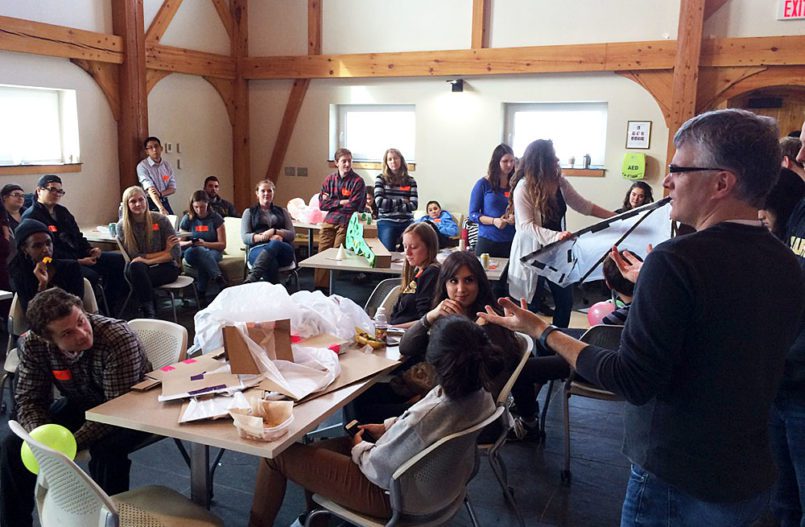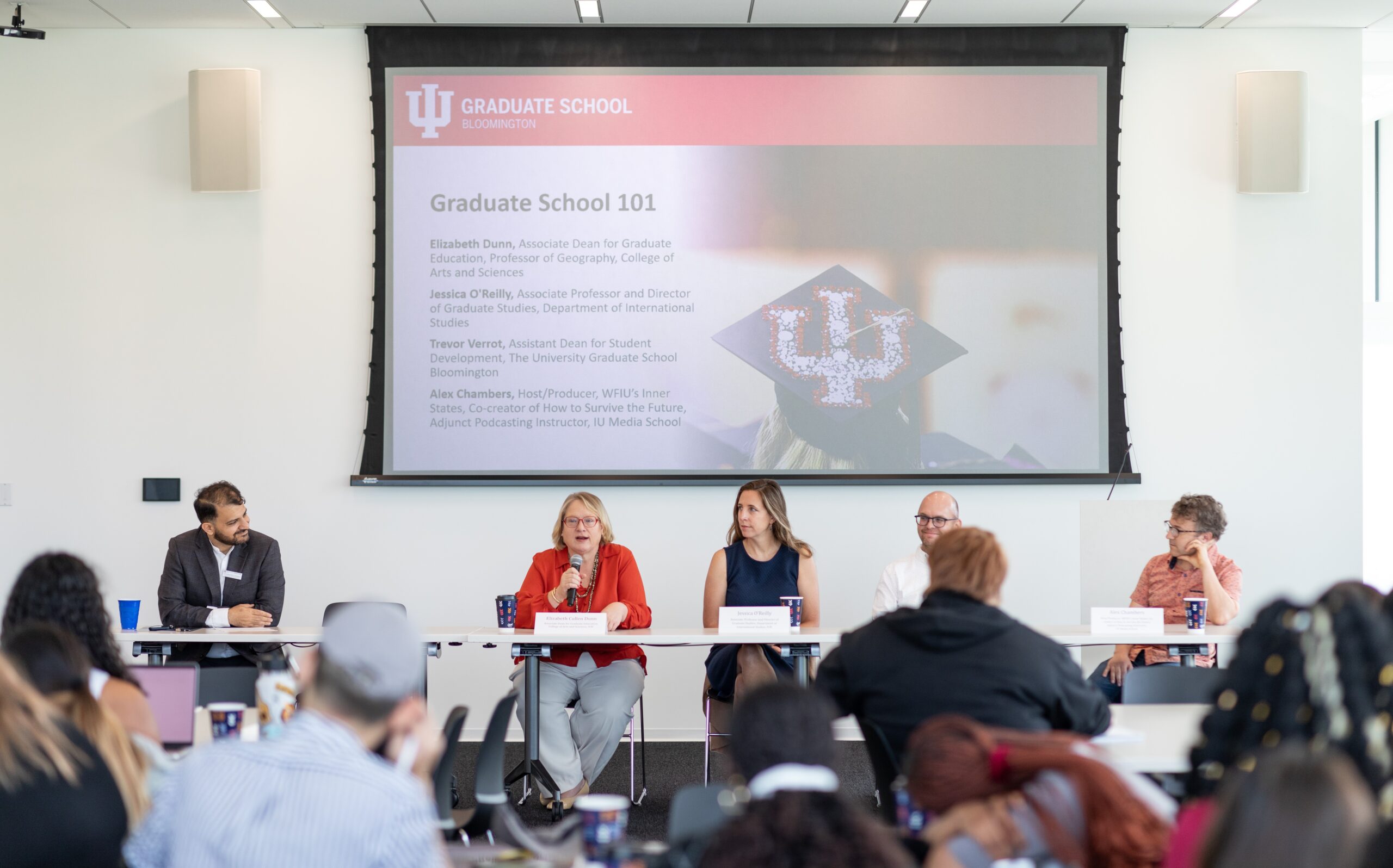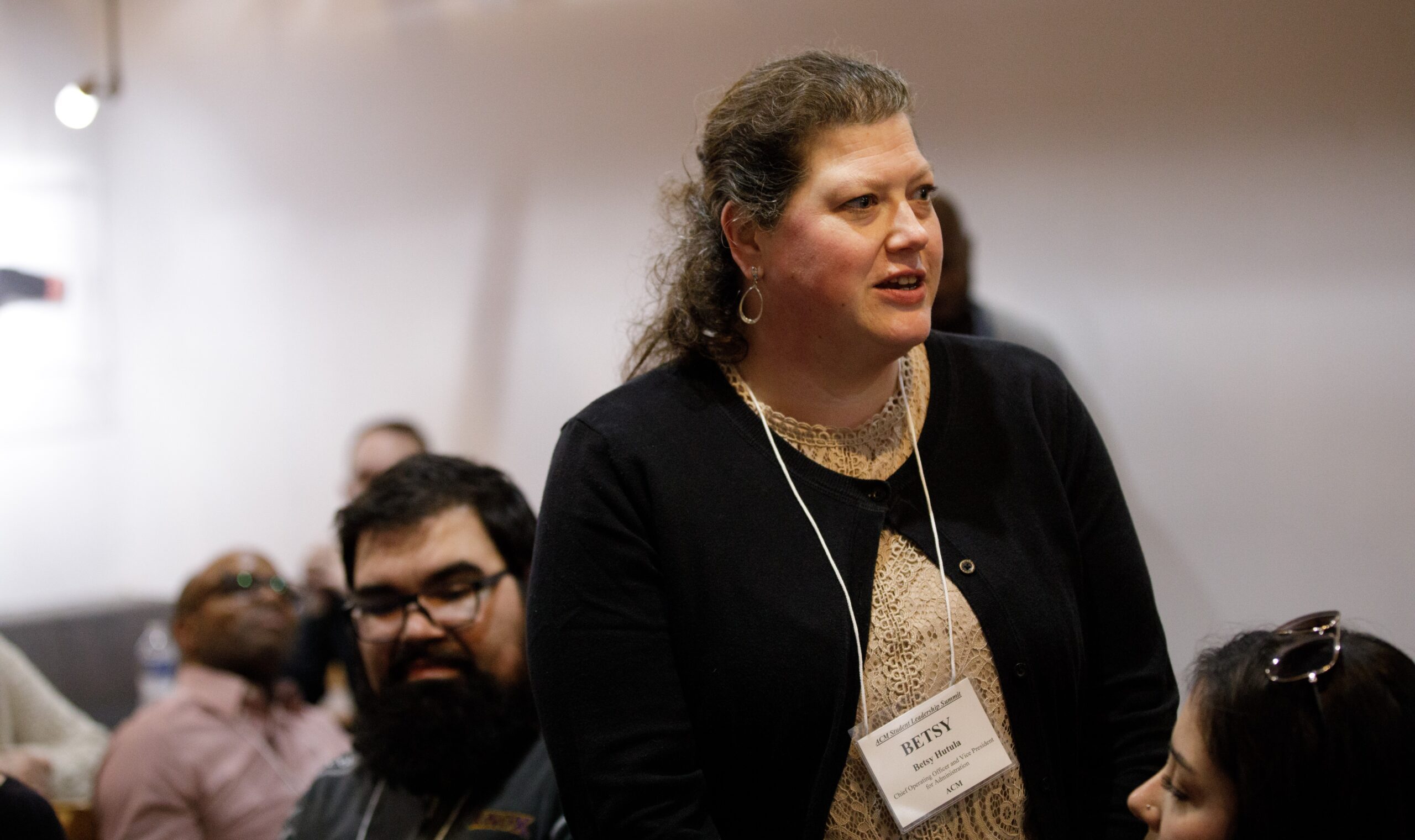“I am still riding the creativity high two weeks later.”
That’s how a student summed up a day-long workshop at St. Olaf College that brought a bit of Silicon Valley to the Midwest.
Three St. Olaf professors developed the Design Thinking workshop module to spark students’ out-of-the-box thinking and problem solving. They modeled the workshop on their experiences at Stanford University’s design school — known as the d.school — and other Silicon Valley companies and institutions they visited in summer 2016 on an ACM SAIL faculty seminar.
Professor of Art Irve Dell, Entrepreneur-in-Residence in Economics Sian Muir, and Associate Professor of Chemistry Paul Jackson participated in Silicon Valley as an Innovation Ecosystem, one of six ACM Seminars in Advanced Interdisciplinary Learning (SAIL). SAIL is among ACM’s array of grant-funded professional development programs that engage faculty with resources to enhance their teaching, research, and service.
The Silicon Valley seminar took 15 faculty from five ACM colleges to northern California for 10 days of site visits and discussions. The on-site experience served as a catalyst for the participants to create curricular materials — courses, modules, assignments, or exercises — to use in their teaching and disseminate on the ACM Project Outcomes webpage for other faculty to adapt and use.
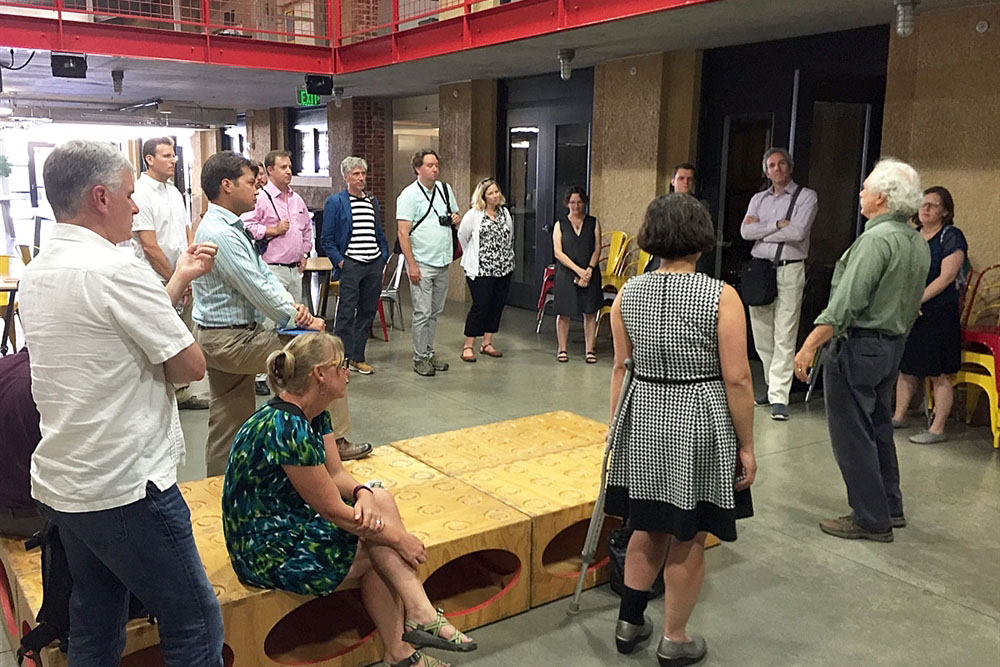 During the 2016 SAIL seminar in Silicon Valley, ACM faculty took a tour of the Stanford University d.school led by one of its founders, Terry Winograd.
During the 2016 SAIL seminar in Silicon Valley, ACM faculty took a tour of the Stanford University d.school led by one of its founders, Terry Winograd.
Creating an environment that’s relaxed, yet intensively engaged
Dell, Muir, and Jackson were struck by the variety of work/play spaces and the kinds of activities used at the d.school and elsewhere in Silicon Valley to facilitate thinking, imagining, and idea-generating. How could they bring those ideas back to campus to use in their classes?
“For us, it was thinking about the kinds of messages we wanted our students to take away [from the workshop],” said Jackson. “We wanted students to see their educational coursework as an opportunity to experiment and play, while paying attention to specific subject matter. Could we create an atmosphere that was more relaxed but was still intensively engaged?”
A Playful Approach to Practicing Creativity and Innovation
Design Thinking workshop curricular materials, including: goals, activities, script, teaching notes, and links to additional resources
They held the Design Thinking Workshop on a Saturday, bringing together about 60 students from 200-level classes they were teaching in marketing (Muir), sculpture (Dell), and environmental studies (Jackson). They chose a space on campus that they could adapt to help draw students out of “classroom mode” for a day as they explored creative approaches to solving problems.
The workshop opener was an improvisation exercise the SAIL faculty group had tried out at Stanford — an activity used by cross-disciplinary teams of d.school students in the design thinking process. The improv was followed by an “invention challenge” for the students to work on in groups, taking an idea for a functional object from concept through refinement to constructing a rough mock-up of the final product.
“We created an environment where they had to stretch themselves,” Jackson said. “We wanted the students to generate ideas, to then test and prototype those ideas, to prototype again, and to see the amazing results you can get if you allow yourself to be unconstrained for a while, and then put the constraints back on.”
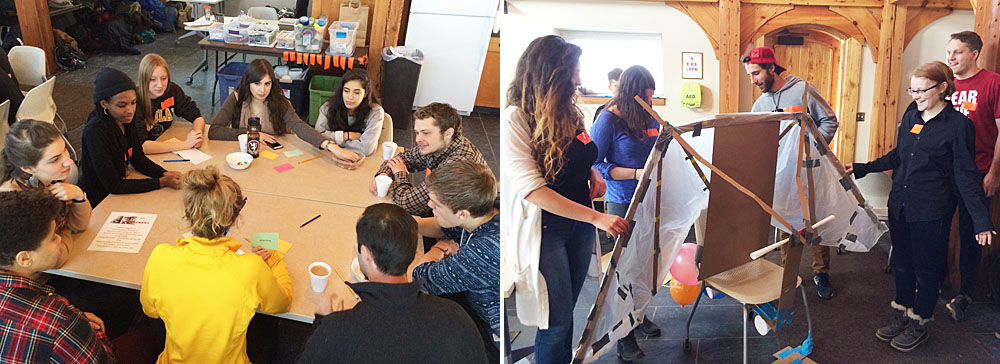 During the Design Thinking workshop, groups came up with ideas for inventions and then built protoypes.
During the Design Thinking workshop, groups came up with ideas for inventions and then built protoypes.
Going beyond the obvious ideas and solutions
According to the three professors, the benefits of the workshop carried throughout the semester, especially in the way students approached group projects, listened closely to each other’s ideas, and valued the different perspectives of their peers.
Dell noted that the workshop emphasized the importance of collaboration. “It was a great warm up for the process the students used to determine their semester-length project of building an object that had to transform from sculptural to functional and back,” he said.
“I find these kinds of group exercises generate many more ideas or points of departure than any single student can,” Dell added. “Often, we can more quickly expose and get beyond the obvious ideas and solutions to reveal more interesting and unusual ones.”
In Muir’s marketing class, groups of students work with client organizations to develop marketing plans. “It is important for them to come up with original ideas to help increase interest in [their clients’] products and services,” she said. “I also teach entrepreneurship, arts management, and management policy, and the workshop process works well in all of those classes for any problem-related activities.”
Like Muir and Dell, Jackson has applied the design thinking process in other courses, such as analytical chemistry. “While we’re studying some of the underlying principles of the discipline in the class, chemistry has room for entrepreneurship and innovation, and in fact invites them,” said Jackson. “I want students to see themselves as innovators, and I think [design thinking] has helped them see the broader context of the chemical enterprise.”
“This project exemplifies the intended outcomes of SAIL and models of professional development more broadly,” said Brian Williams, ACM Vice President and Director of Faculty Development and Grant Programs. “The faculty members’ experiences and learning in Silicon Valley led to their innovative workshop on campus, and the online resources extend the reach of SAIL by providing a blueprint for other faculty to adapt and use in their teaching.”
Links:
- A Playful Approach to Practicing Creativity and Innovation — Project report and curricular materials for the Design Thinking workshop
- SAIL 2016: Silicon Valley as an Innovation Ecosystem, including the on-site seminar schedule and blog posts by participating faculty
- Seminars in Advanced Interdisciplinary Learning (SAIL)
- ACM professional development programs for faculty and staff
The ACM SAIL program is supported by a grant from The Andrew W. Mellon Foundation.






